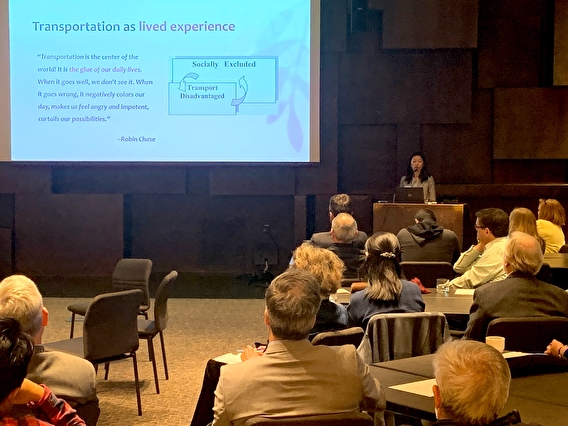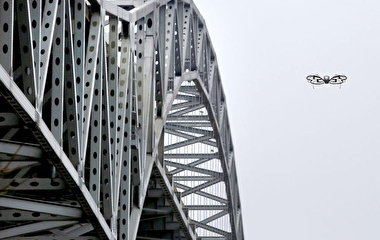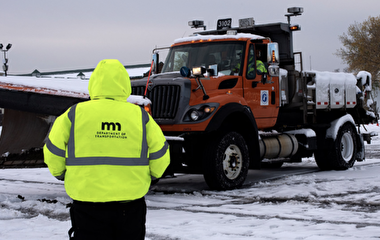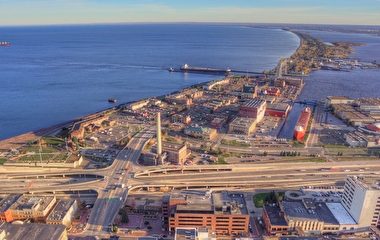
Throughout 2023, CTS and transportation scholars are envisioning and preparing for the future of mobility through a series of articles and events. Videos of presentations by three Future of Mobility contributors are now available on CTS’s YouTube channel.
In May, Yingling Fan, professor with the University of Minnesota’s Humphrey School of Public Affairs, and Greg Shill, professor at the University of Iowa College of Law, presented at an event titled Refocusing Transportation Decision Making. In June, Lauren Linderman, associate professor of civil, environmental, and geo- engineering, presented alongside Jennifer Wells, state bridge inspection engineer at MnDOT, at the Technology for Bridge Preservation and Maintenance webinar.
Fan’s presentation built on ideas articulated in her article for the Future of Mobility series, United by Transportation. She shared that her writing was inspired by the 2020 Tokyo Olympics motto, “United by Emotion.” Fan seeks to look at ways in which transportation—like sports—can provide a common experience that helps unite communities. First, she argues, we need to “...conceptualize and operationalize transportation infrastructure as an essential public space.” Further, policies and investments should recognize that transportation is a shared space as well as a lived experience and a social construct, she says. Traditional system designs with an overwhelming emphasis on efficiency underemphasize the human experience of transportation—which can provide social and community cohesion. The presentation to dozens of attendees was followed by a lively discussion in a conversation circle.
Watch a video of Fan's presentation and the discussion
Shill joined the Refocusing Transportation Decision Making event virtually to give his presentation, which emphasized themes from his submission, Transportation Safety in a Second-Best Environment. Shill argues that making comprehensive policy changes in transportation safety is a difficult and thorny enterprise, and that even near-perfect reformative plans can have little practical chance of succeeding. Instead, Shill points to “second-best” solutions that are easier to implement and can result in real incremental gains in safety. One example is the simple installation of protective bollards on sidewalks and plazas adjacent to busy intersections to provide a shield for unprotected pedestrians. In his presentation, Shill also suggested revisiting key performance indicators used to measure system performance—which can overemphasize efficiency at the expense of users.
Watch a video of Shill's presentation
The Technology for Bridge Preservation and Maintenance webinar highlighted how sensors and drones are being used to maintain and monitor bridge performance—and explored how such technologies may shape the future of transportation infrastructure. Lauren Linderman expanded on her Future of Mobility submission, Sensing the Future of Infrastructure, in which she explains how sensor technology can provide vital data about bridges and other structures, allow for better performance tracking, and help stakeholders make more informed choices about future projects. She was joined by Jennifer Wells, who discussed MnDOT’s unmanned aircraft systems (UAS) bridge inspection program.
Writer: John Siqveland


